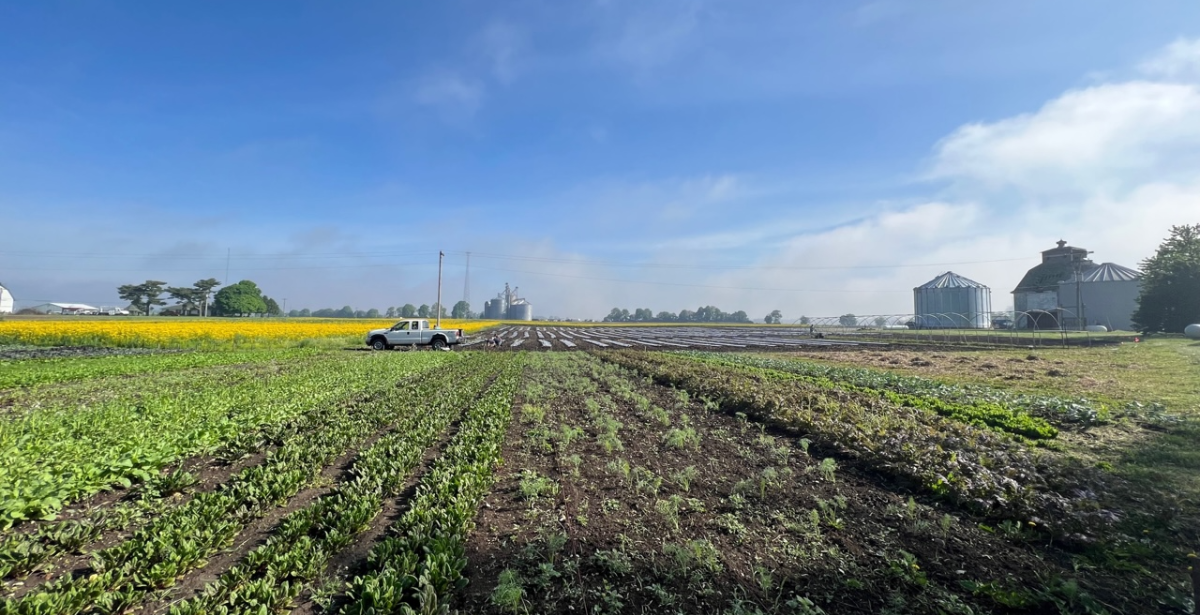Where is Hendrick House Farm? What grows on the farm? Who farms it? I drove out to Hendrick House Farm to learn more about the farm’s sustainable agriculture. In my rubber boots, I met up with Hendrick House Farm Director Ann Swanson who showed me the farm’s land on ten acres located on North Rising Road in Champaign.
As we talked, Swanson shared about the 15,000 pounds of produce farmed annually for Champaign-Urbana, the alfalfa plants grown for Prairie Fruits Farm’s goats, the farm’s pet pigs rescued from a slaughterhouse, and the brand new on-site greenhouse. I asked Swanson about her culinary career (including her time at bacaro) and how she started the annual Allerton Forest to Mansion Dinner event. She told me all about her goal to change institutional food — and what she likes to cook for herself at home.

Photo by Alyssa Buckley.
Smile Politely: Thanks so much for taking me around the farm. Can you tell me about Hendrick House Farm?
Ann Swanson: So, we’re a collaborative farm. We have partnerships with the Champaign Urbana Schools Foundation (CUSF), and we are in partnerships with a guy named Wyatt Muse who farms all the row crops around us. He runs a mix of certified organic acreage and non-GMO crops. We farm using organic practices; we’re not certified, but that’s how we just try to be good stewards to the land. Michael Vitoux is the land owner and rents to Hendrick House which is owned by the Hendrick family.
CUSF was leased this one acre plot of land on the south side of the driveway for youth workshop gardens. It was started by a really awesome teacher, a science teacher named Julie Anders at Edison Middle School. She started putting in fruit trees and perennials and raised garden beds. She has chickens, and I have two rescue pigs.

Photo by Alyssa Buckley.
SP: Where did you rescue your pigs from?
Swanson: The slaughterhouse! One of them was born in a slaughterhouse.
SP: [gasps]
Swanson: I know! Isn’t that awful?
SP: Well, now they live here! What a nice little life. What are their names?
Swanson: Jude and FreeBee. They are so wonderful.
[Edison teachers] Julie Anders and Meghan McGreevy teach children about animals’ role on the farm and about how to be around animals. We teach egg classes about different varieties of eggs laid by the chickens.
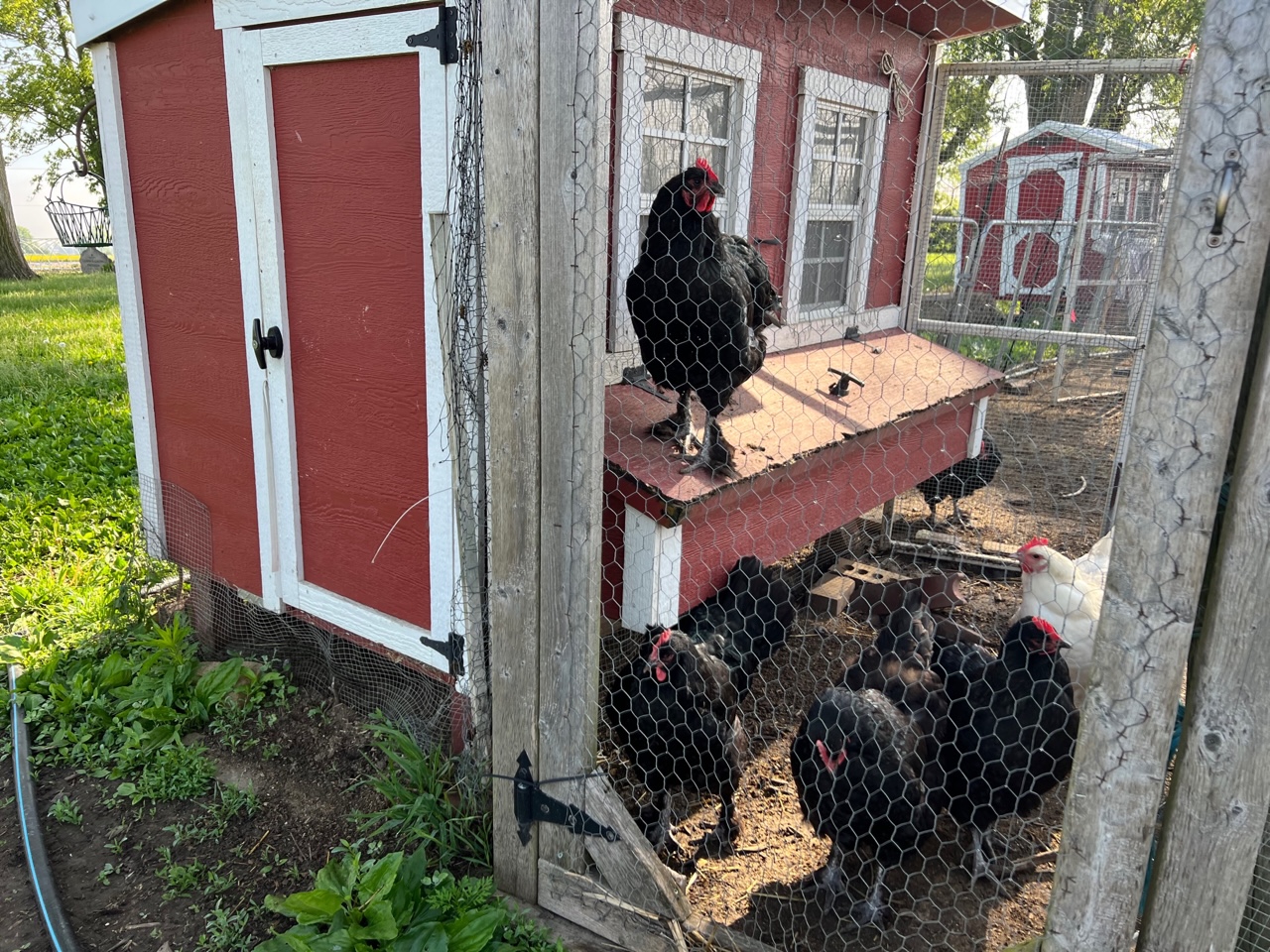
Photo by Alyssa Buckley.
We also have raised garden beds where we teach them where their food comes from. The North side of the driveway — out to that alfalfa field which is covered in leaves right now — is Hendrick House Farm, and I work for Hendrick House as the Farm Director. We’ve been out here for four years now, and we grow five acres of alfalfa which we sell as goat feed for Prairie Fruits Farm.
SP: So cool!
Swanson: Yeah, we keep the money local, and it’s a cover crop that helps put nutrients back into the soil. I thought when we moved out here that ten acres would be a bit too much to bite off, and I think I was right. [laughs] The other five acres are in vegetable production.
A couple years ago, I got a grant. The Director of CUSF Kelly Hill and I wrote a grant for the Lumpkin Family Foundation to get a greenhouse because we’re trying to have this land utilized year round.
SP: Yeah, we have a long winter.
Swanson: Yeah, and the school schedule is August to May, so we want kids coming out here as much as possible. So this greenhouse helps us, and it was just built this year.
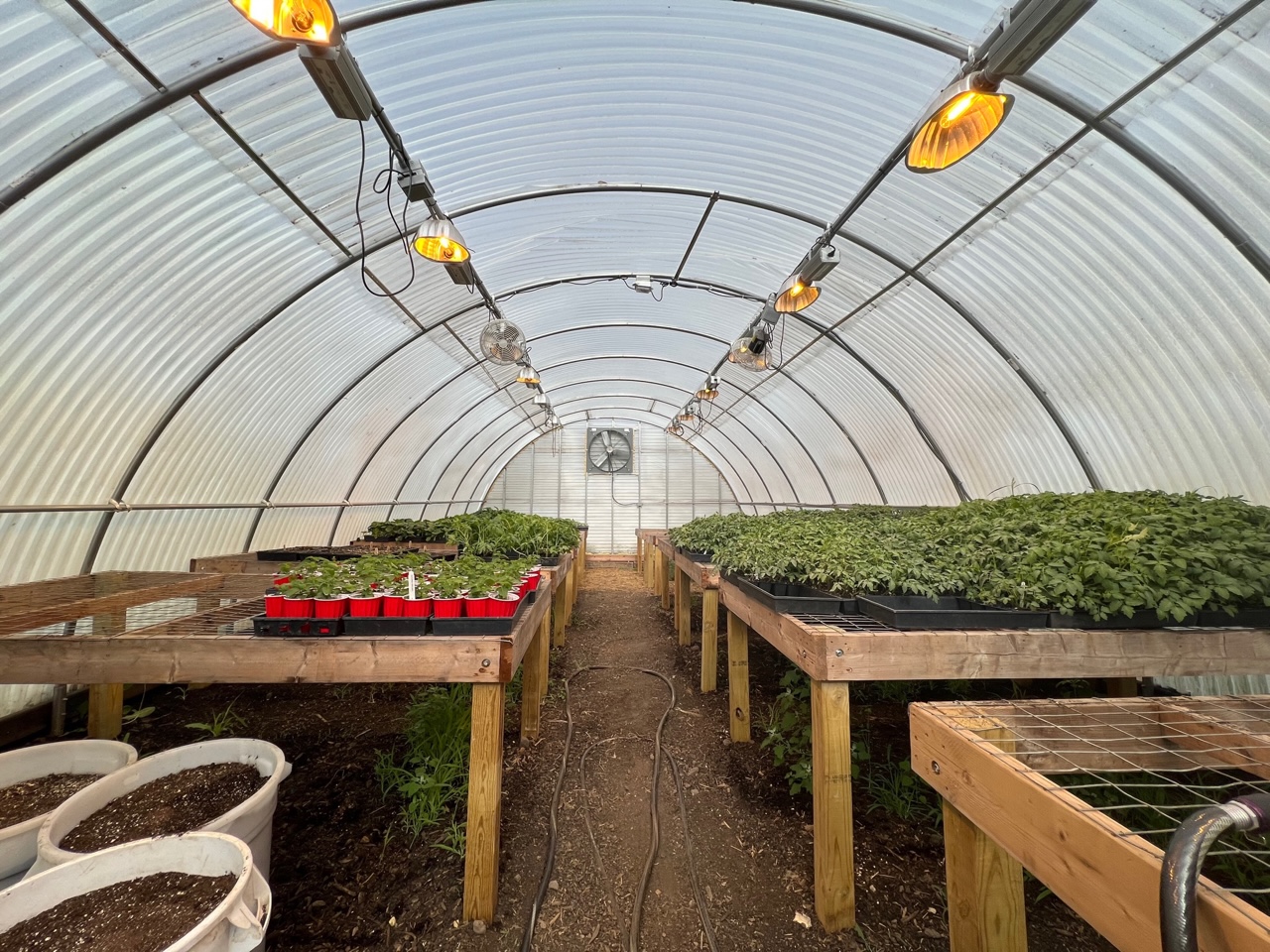
Photo by Alyssa Buckley.
SP: Wow, this is so cool.
Swanson: This is the first year we’ve been able to use it. We’re in the middle of transitioning all of our summer plants out of the greenhouse. We have tomatoes, cucumbers, melons, [and] squash, and we’re getting ready to transfer those out and plant them in the field. Then we’re going to replant in here all of our fall crops like broccoli, cauliflower, kale, things like that. Previously, we were growing in the greenhouses at the University of Illinois, so this is just a dream come true to have a facility on property where we don’t have to leave.
It’s wonderful. We have seed-starting workshops with the children in here. Actually, that second bench over there, everything was planted by Edison Saturday schoolers.
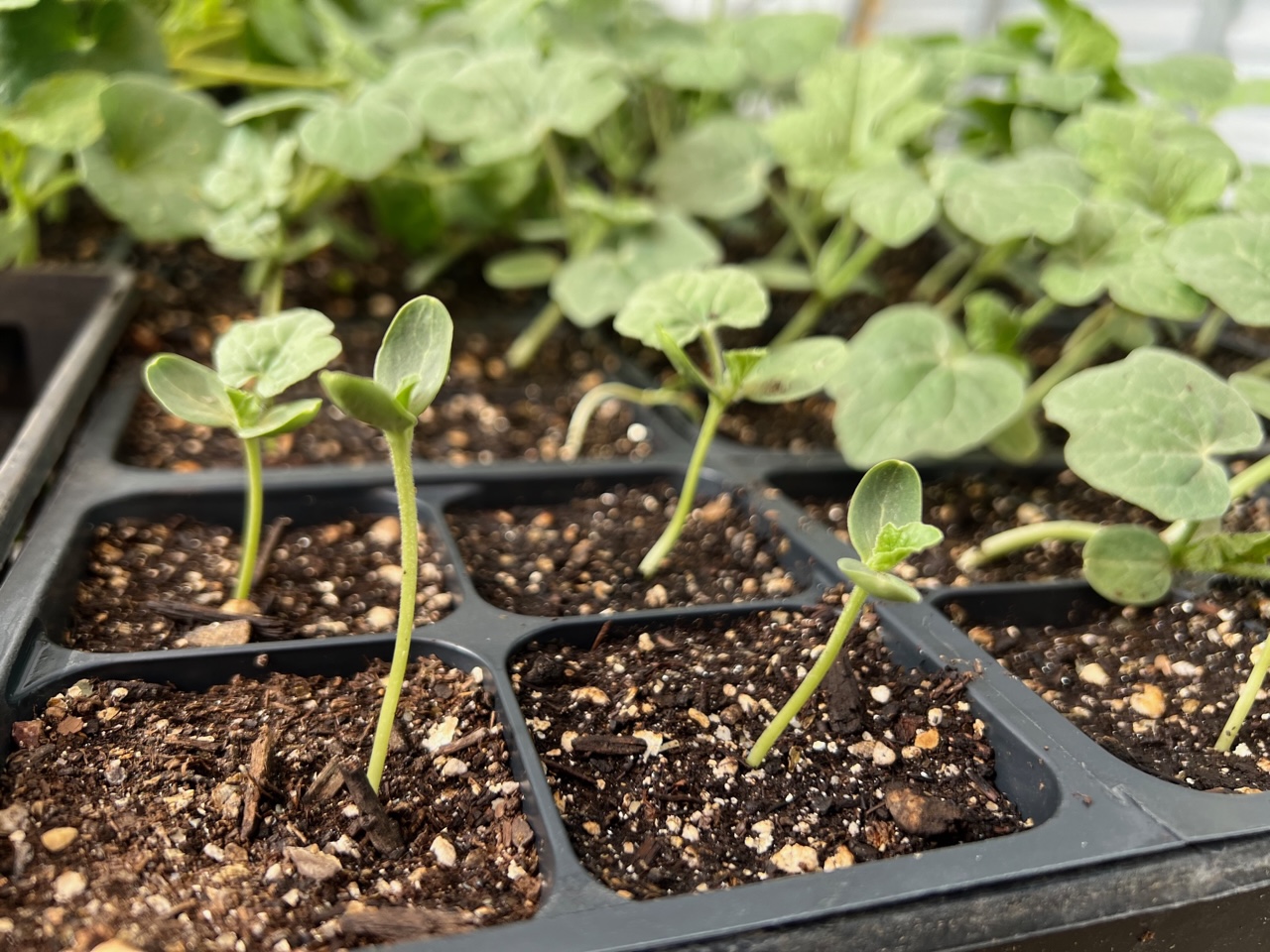
Photo by Alyssa Buckley.
SP: This is awesome.
Swanson: I worked really hard. I taught myself how to write grants. I got a lot of funding that way; I’ve gotten three so far. One for the greenhouse, one for teaching children, food service workers, and the community how to work with local foods, and the third — well, it’s not really a grant. It’s a funding opportunity that was through NRCS (Natural Resources Conservation Service), and it was for the high tunnel. It’s not here yet.
The reason the high tunnel is so important because it means I can grow year round. That was the goal from the beginning: to provide food to the area all year and have kids out here to show that we can grow in the winter. These tunnels provide a utopian environment for the plants to grow because they’re protected from the elements.
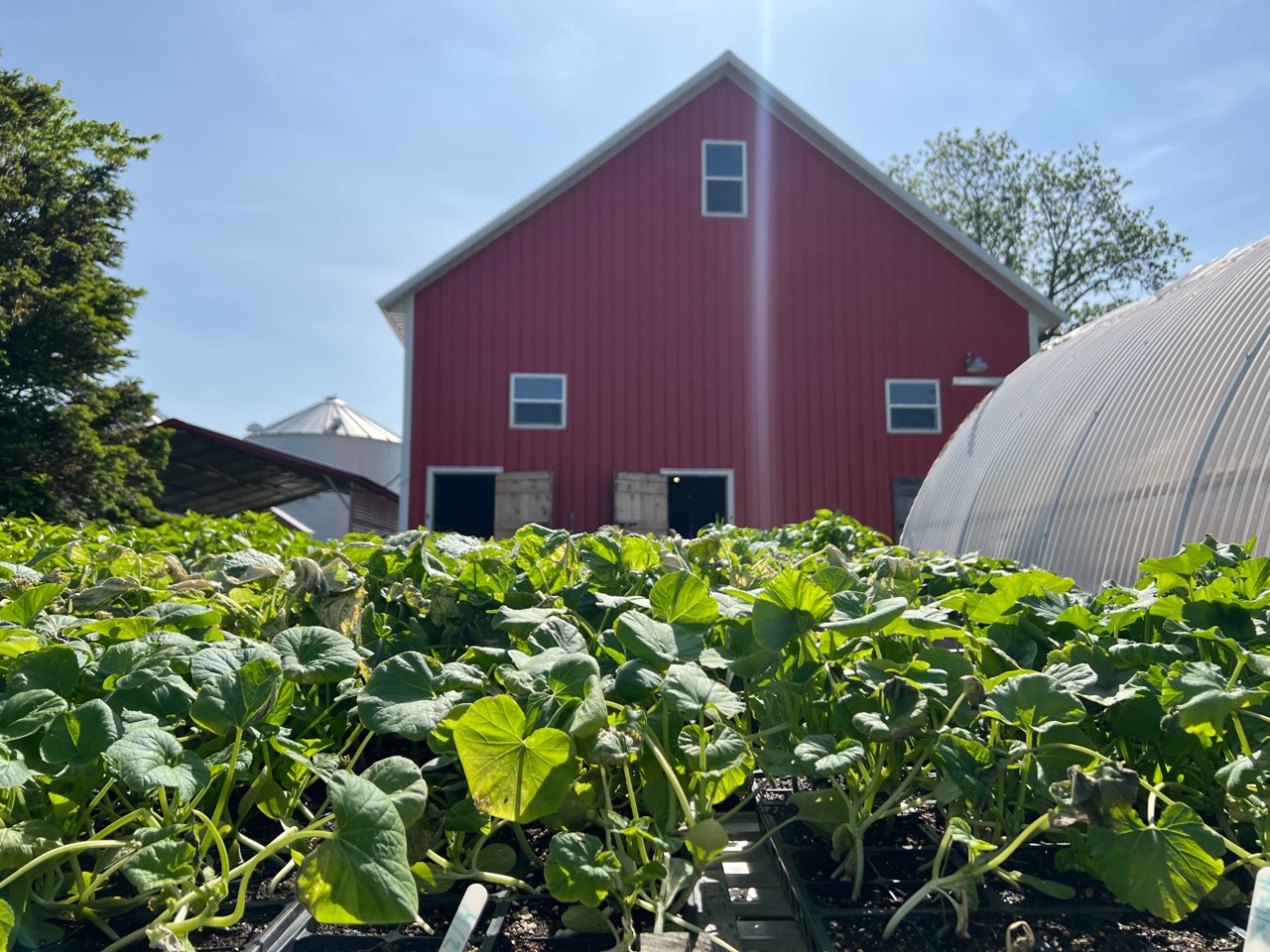
Photo by Alyssa Buckley.
Let me take you over here to show you this. Our vegetables all come out of the field and come into our wash-pack area. It’s just what it sounds like: we’re washing and packaging all our stuff in here.
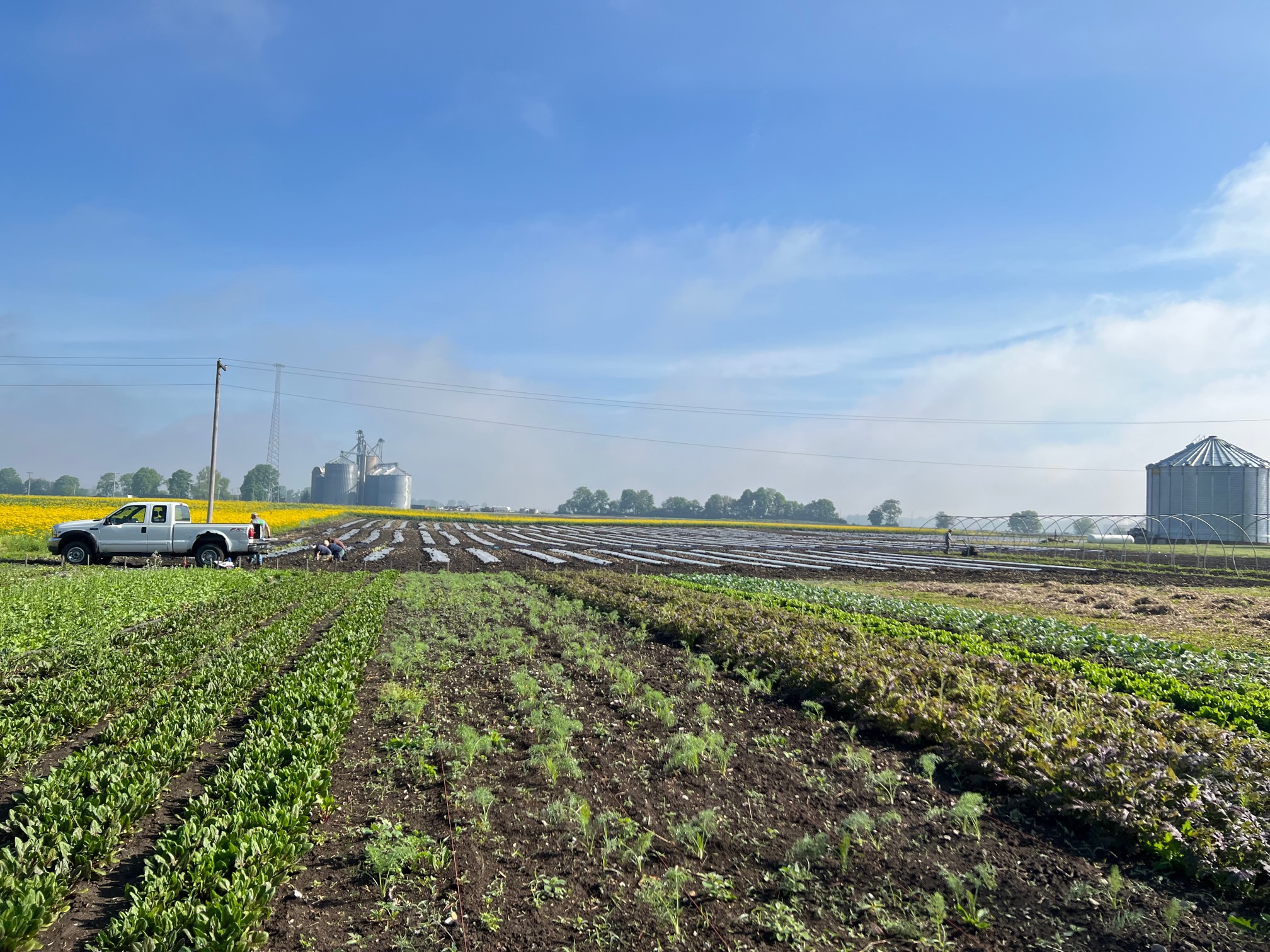
Photo by Alyssa Buckley.
Swanson: These radish pods from the Easter egg radish variety produce such wonderful flavor. Try this. It’s so good.
SP: You have no signs. How do you know what is what? Did you plant these?
Swanson: Yes, all of these were direct seeded in March.
SP: Do you plant the crops in the same order every year?
Swanson: No, I kind of switch it up. I do groupings. All of my direct seeded stuff is grouped into one because we use different irrigation on this part of the plot than we do in the plastic. Our irrigation for all our direct seeded crops and our spring crops are overhead sprinklers. The sprinklers are already in the field, and everything is connected to our well by this two-inch lay-flat hose. All the water runs through this lay-flat hose, and all we have to turn a knob on, and it waters it.
SP: So tell me about your well. Maybe all farmers use wells, but I don’t know about wells.
Swanson: [laughs] A lot of people use well water in the country. When we first moved out here, this whole homestead — there used to be a house on this property. The landowner’s grandmother lived here, and this part was a cow pasture, so this ground is super fertile.
SP: Was this land anything else before that?
Swanson: It was all farmland. This is the original barn that got remodeled, and this one is a drive-through barn. We find things in the land all the time.
SP: What’s the craziest thing you’ve found in the soil?

Photo by Alyssa Buckley.
Swanson: You saw: we just found a horseshoe, fully intact. We’ve found pieces of the old well. We’ve found pieces of old tractors. I know there’s some buildings that are buried in the back.
They had an existing well here, but it was the original well and very old. We were getting a lot of sediment in our lines that we hooked up here, so we decided we needed to dig a new well. It’s pretty deep; it has a pump on it. We run that lay-flat from our well to the rest of the farm. It has a pretty high PSI, so we’re able to run different sections at the same time.
SP: Excuse my ignorance. So you all just dug a hole in the ground, and there’s water deep enough to just, like, do that?
Swanson: [laughs]
SP: How exactly do you get a new well?
Swanson: Basically, we are sitting on top of the Mahomet Aquifer. There’s this wonderful company Grosch Irrigation from Mason City, Illinois that installed our new well for us. That was about four years ago, and they still come and check on us. I can’t recommend them enough.
SP: If you ever need a well…
Swanson: Yes! If you ever need a well, call Tracy from Grosch Irrigation. It’s a very expensive cost. It was like $25,000 to put it in. I am really grateful we did that because we don’t have any water issues. The water is clean.
Okay, so these are carrots popping up. Here’s cabbage.
SP: So pretty!
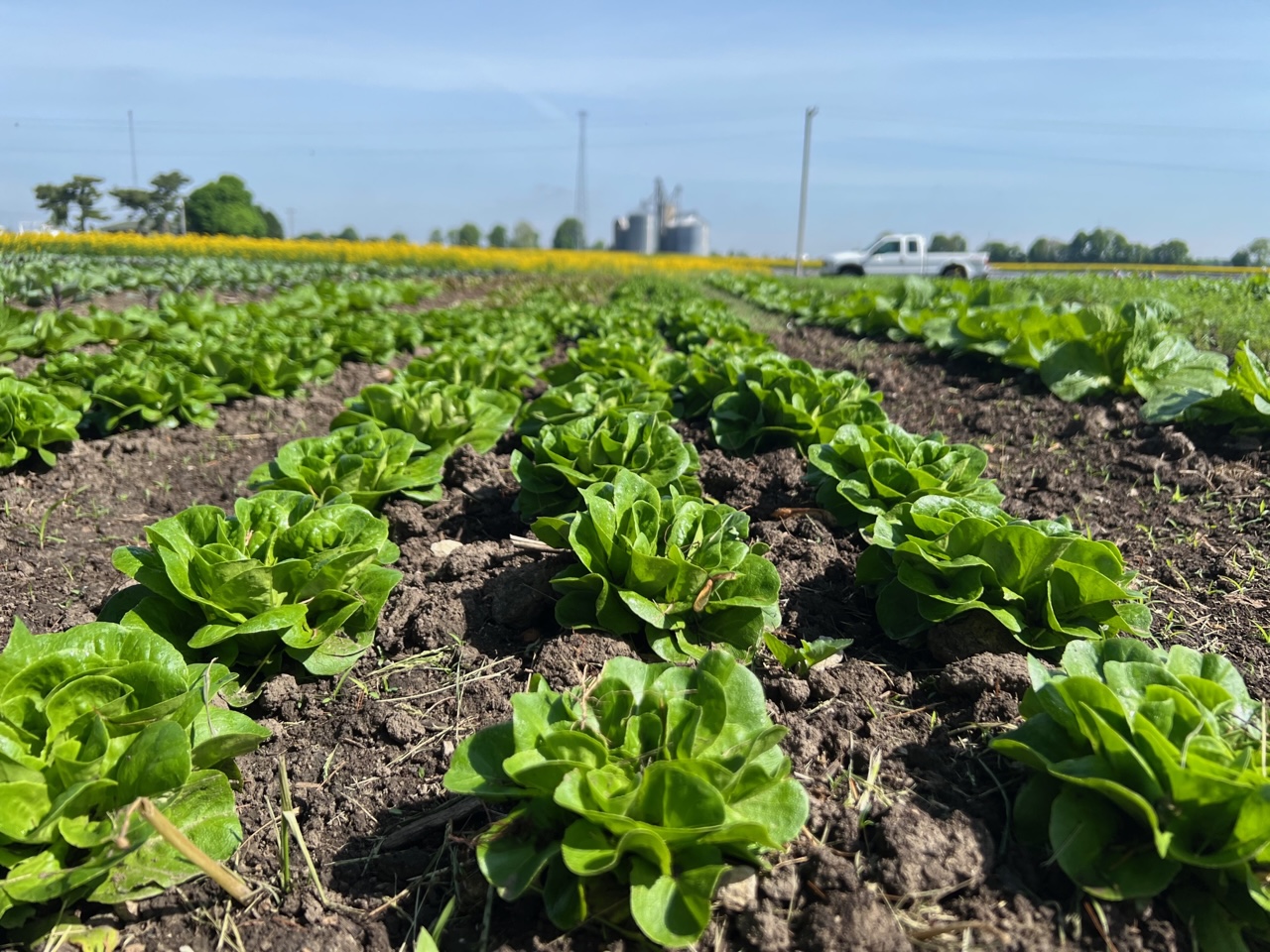
Photo by Alyssa Buckley.
Swanson: It’s our first year growing bib. I’m so excited about it. We’ve only grown romaine because that’s what the cooks like and students can recognize.
Okay, so here is our cabbages, our cauliflower, and broccoli. We see kale at the end. We also have potatoes and sweet corn that I planted this week. So this whole area is planted.
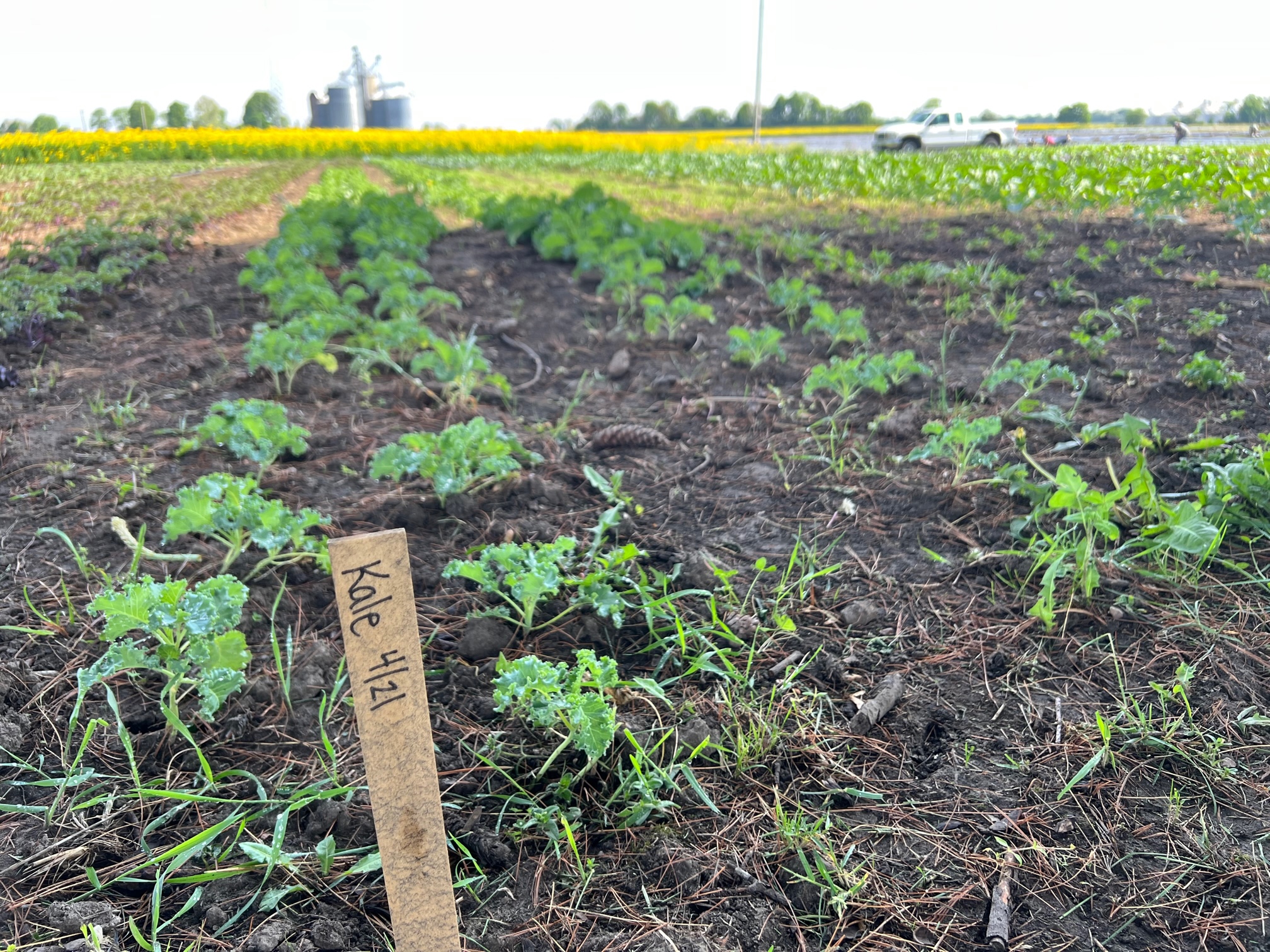
Photo by Alyssa Buckley.
SP: All of this goes to Hendrick House on campus?
Swanson: So Hendrick House has a bunch of different food service locations. They do food service for Carle at The Fields and Parkland College, just to name a few. There’s a couple dorms on campus: of course, Hendrick House, Armory House, [and] a couple fraternities and sororities. We are doing food service for DREAAM House this summer.
SP: How much food is Hendrick House sending out to C-U?
Swanson: We produce about 15,000 pounds of produce every year that goes to our small CSA program and to Hendrick House accounts to elevate the quality of food served in institutional kitchens.
SP: This is a lot of food.
Swanson: It’s wonderful. It’s so wonderful that I got a grant from Sustainable Agriculture Research in Education (SARE). The grant was to teach food service workers how to use local product. A lot of people don’t have the training, so we hosted workshops on training about what does farm produce look like, what do you do with it when it walks through the door, and how to cook seasonally? That was a huge benefit for the company because if you’re not used to fresh produce, you don’t really know how to use it, and it can be kind of intimidating.
So this is our youth workshop garden. We had a Boy Scout a couple years ago do his Eagle Scout project with us, and he built a movable chicken tractor.
SP: A movable chicken tractor? Why would you want it to move?
Swanson: That’s a really good question. The reason is because the chicken manure is very, very valuable to farmers. So you put chickens in there, and then they go to the bathroom and fertilize the soil — then you move it to a different spot, and it can fertilize more area. It can be moved easily; it has a handle, and you just pull it. It has big, fat wheels can get over the rough terrain out here.

Photo by Alyssa Buckley.
SP: The chickens are coming up to the fence. They’re all coming to the door!
Swanson: The chickens are my partners Julie Anders’ and Meghan McGreevy’s. Anytime the chickens see humans, they think food!
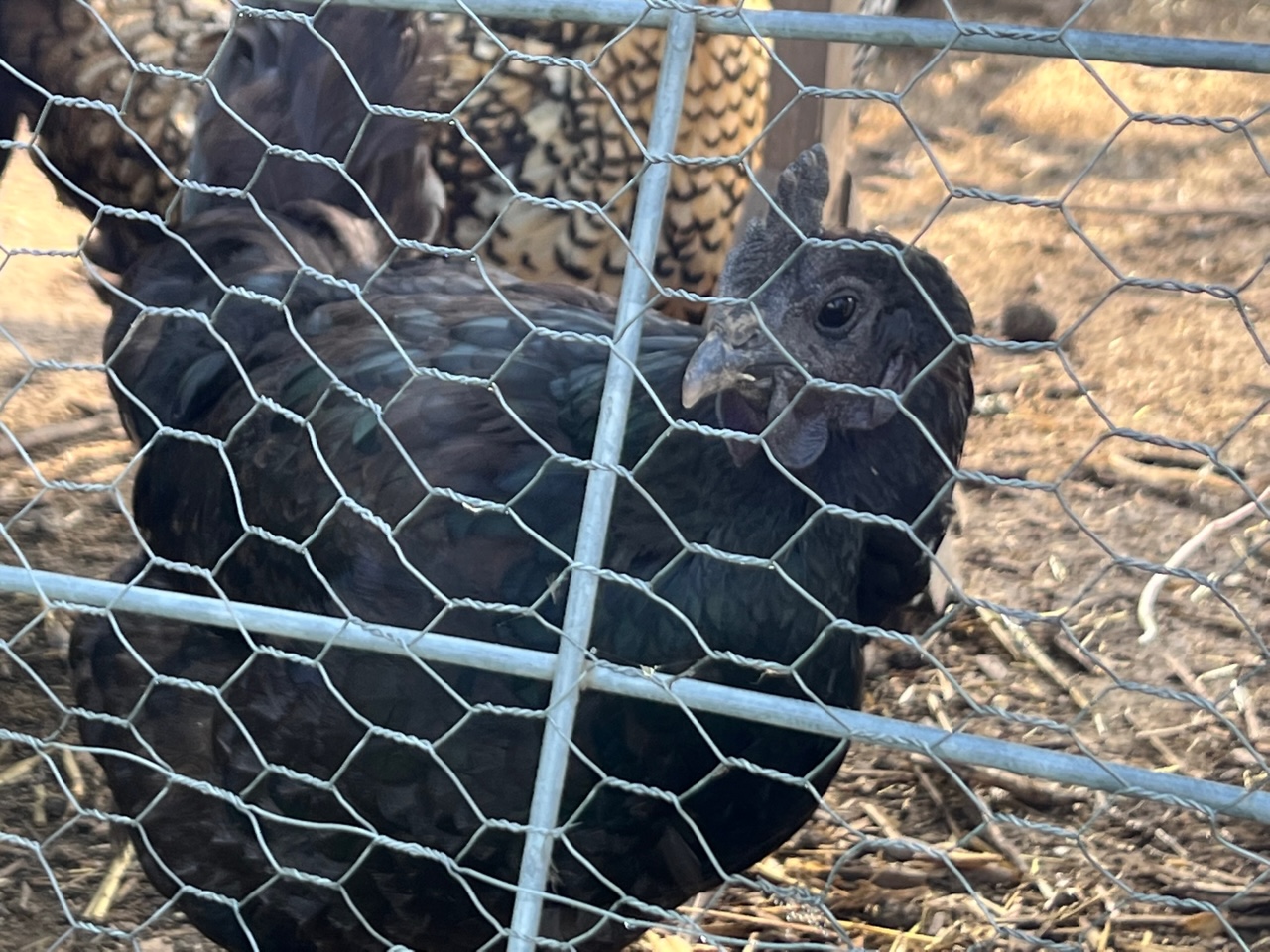
Photo by Alyssa Buckley.
SP: Did kids plant this garden over here?
Swanson: It’s so wonderful. We have worked with DREAAM House in the past. It’s a non-profit for African-American males to teach all kinds of life skills for Pre-K all the way to young adulthood. They’re wonderful kids. They built that fence, did the math, and used power tools. We have daylilies planted in the middle of that.
So Edison Middle School, their garden club planted these. The Edison kids have a really wonderful teacher named Meghan McGreevy, and she’s actually been leading these workshops.
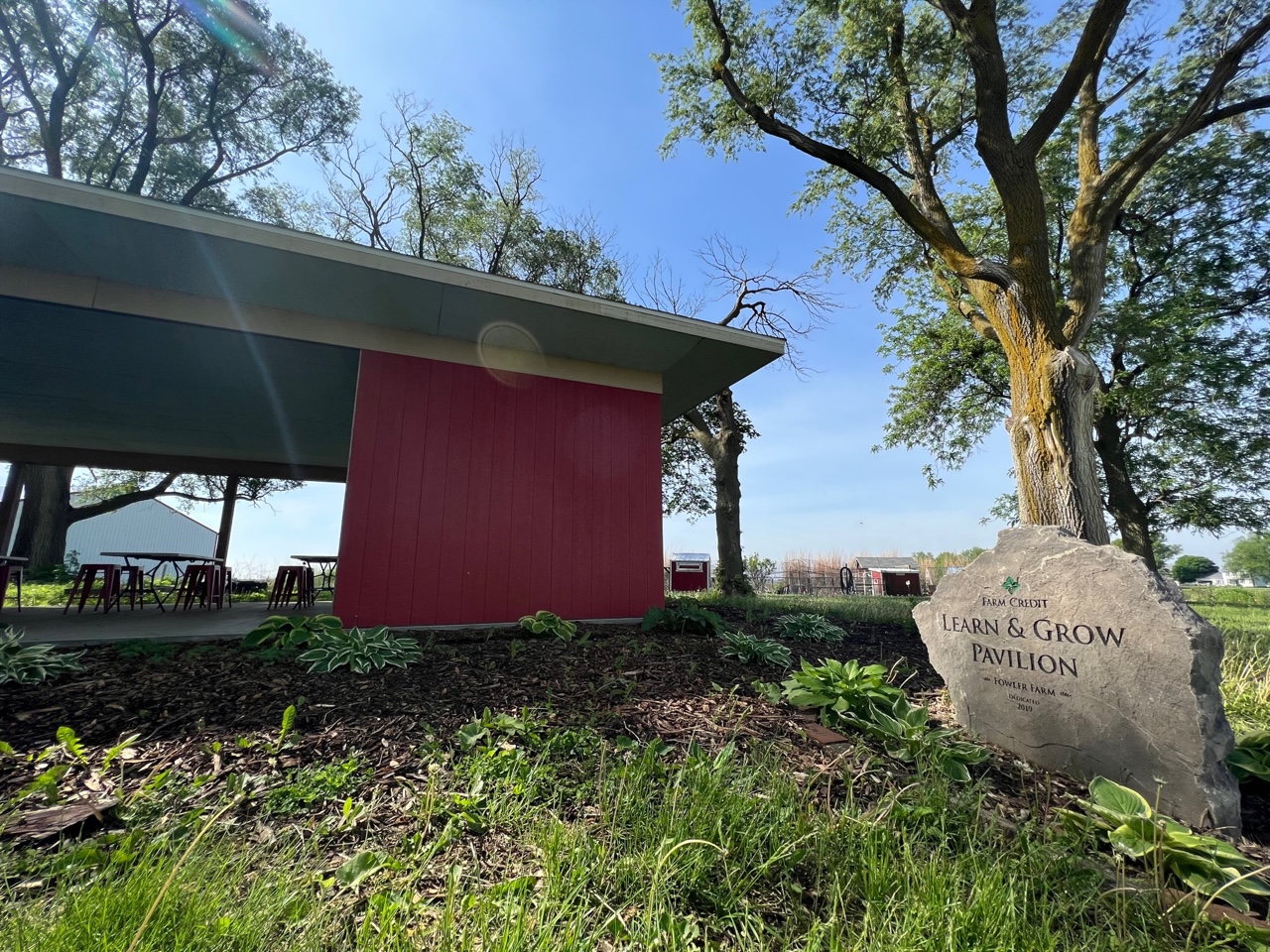
Photo by Alyssa Buckley.
We host workshops, too, and we teach where the seed comes from, what the seed looks like, how to plant it, what nutrients the plant needs, what water, sunlight, things like that. We try to let them see the very beginning and the very end result, so they can identify the process. We have a pizza garden out here.
SP: What is a pizza garden? I know you can’t grow pizza dough…
Swanson: [laughs] No, but you can grow wheat! And garlic and tomatoes and peppers and onions. Kids identify with their favorite food — and that’s normally pizza — and then they come out and put that in an applicable situation. They can learn how the plants grow and how long, in real time, it takes to make a pizza. Like harvesting the wheat and grinding it down.
SP: Do you grind wheat here?
Swanson: Oh, yeah, we had a little section. There were little slices, and each slice was a different vegetable. We had wheat growing, and Julie Anders had a little grinder. The kids could see how to grind the wheat. Then, when kids realize how long it takes in real time to make pizza — it takes seven years! That’s pretty crazy considering you can order Domino’s in like thirty minutes.
SP: Yeah. Can we talk a little about the Allerton Forest to Mansion Dinner. You are in charge of that, right?
Swanson: Yeah, so the Allerton Park and Retreat Center is great. I started off — my friend Nate Beccue and I started doing it in 2013. Nate is the Natural Areas Manager of Allerton, and I’ve known him since high school.
SP: How did you get the idea for a forest to mansion dinner?
Swanson: Well, Nate was like, “Ann, we have all these wonderful edibles in spring. Why don’t we make a dinner out of it?” and I said, “Okay!”
He knew the natural edibles side, and I kind of knew the cooking side.
SP: Kind of? Aren’t you a trained chef? Might be more than kind of, right?
Swanson: Yeah, okay, you’re right. I could not wait to get out of Illinois when I was 18. I moved to South Carolina and went to school at USC in Columbia, South Carolina. Then I was getting ready to go to the French Culinary Institute in New York City, and I was all ready to go when I scratched that at the last minute and moved to Charleston on the coast of South Carolina for many, many years.
I worked for a very famous chef named Sean Brock, and that’s where I got most of my high-end, fine dining training. We were doing molecular gastronomy, and we did farm-to-table where all the chefs would go out, run the farm, then go in, and work. That’s kind of where I got my passion for farming. It was a very challenging experience but super rewarding. We went through the recession in 2008, and people started cutting out expensive activities like fine dining, so it became very hard to make a living.
I moved back to Illinois in 2010, and Thad Morrow hired me at bacaro. He had the idea of starting a Market Monday. We’d go to the farmers’ market on Saturdays, and I would create a tasting menu on Mondays. I ran that for a while, and it was a great idea on Thad’s part. Then, working in fine dining wasn’t very satisfying for me anymore.
I kind of had a switch in my life where I wanted to start working with non-profits and start a teaching farm. There was an opportunity at Hendrick House, and the owners were very forward-thinking. They supported me in starting a farm for them, and the goal was to change institutional food. I wanted to move away from the traditional pan-to-can cooking, the pre-processed, pre-made food.
SP: Processed food happens a lot at university dining halls, for sure.
Swanson: Well, all institutional kitchens: hospitals, dorms, school lunches. I wanted to work on reform for that. That’s how this whole thing started.
SP: It sounds like you have! From the farm to institutions all over Champaign-Urbana.
Swanson: It’s just so much more rewarding than cooking fine dining. I still get to do specialty dinners and cook cool food. I do dinners at Prairie Fruits Farms sometimes when they were having their dinner series, so it’s the best of both worlds.
SP: And it sounds like you made that happen yourself. You sought it out, chased your dreams to South Carolina, came back home to Illinois for a new chapter, and did all the things.
Swanson: It’s so great to be doing this. The older I get, the more I just want to push education, especially food education. A lot of these are invasives that are growing in people’s backyards — that they don’t know about like wild garlic mustard. We actually had one of our ingredients that we couldn’t use anymore because the City of Monticello had sprayed it because it was an invasive. It was this wonderful stuff called Japanese knotweed. Putting on the Allerton dinner is a great way to not miss cooking.
SP: Yes, let’s talk more about the Allerton dinner.
Swanson: Right. So, it is usually an eight course dinner. We have the Allerton hike that goes out so the guests can learn about what they’re eating.
SP: Did you start out with the hike in year one or was it added?
Swanson: Year one! We were doing all this crazy stuff like trail snacks. The hike was the day of the event, so we weren’t getting our product until late, so we made a couple tweaks. In 2017 or 2018, I started adding chefs to do a course so that way it wasn’t too much for me in the spring, being a farmer at the same busy time of year.
SP: What are you doing at the farm during the time of the Allerton dinner?
Swanson: We are trying to work ground and get all of our spring crops planted. Kale, lettuces, and things like that. We have a small CSA program, so if we don’t get in the field in April, then we won’t be ready for our CSA to start in June. That’s really important for us to get in field. So that’s what I’m doing side-by-side with the dinner.
SP: Planning an eight course dinner plus a hike and running a farm sounds like a lot! Who were the first chefs you invited?
Swanson: So Mark Hartstein. Sometimes, he does a stand called Shady Dawgs. He works at Black Dog, and he’s worked at so many restaurants. He’s like a Champaign staple. His wife Leslie Bettridge who is also a really phenomenal chef. Alisa DeMarco — she was a part of it. She used to be the chef at Prairie Fruits Farm. Drew Starkey who used to own bacaro has been a part of it. Chris Alwes who used to be a chef at Destihl before it closed.
SP: It’s still so sad that Destihl closed.
Swanson: I know! I’m so sad!
SP: I miss that deep-fried battered bacon.
Swanson: I know. Blake Biggs from Epiphany Farms Restaurant Group, he participated this year. Sarah Hess Pierson who used to be at Prairie Fruits Farm — now she’s with Hendrick House — she participated this year. We’ve also invited Adam Shallenberger, Heidi Leuszler of Berries and Flour, and Jeff Hake. We try to keep the same chefs, but sometimes we change it up to give the diners a new look at everything.
SP: What’s your favorite course of the dinner?
Swanson: I usually begin and end the dinner. This year, I made an amuse-bouche of beef tartare, and I ended the dinner with Allerton chocolate truffles. It’s just become a wonderful event. When we were in the pandemic, we tried to keep it going. Next year, it will be our ten year anniversary of it.
SP: Is there going to be anything special coming for the ten year anniversary dinner?
Swanson: Yes! I’m not sure what it is yet, but it will be something special. I just haven’t decided yet. We wanted to keep this going through the pandemic. So in 2020 and 2021, we did cooking kits, and I did a video online and people could cook along with me. It was recorded, and people could go back and watch it later. I think it was well received, and it was a cool idea to keep it going after all these years. Really, this dinner started with Nate Beccue.
SP: Okay, tell me more about the pigs.

Photo by Alyssa Buckley.
Swanson: I have two. Jude was born in a slaughterhouse. A farmer friend of mine was taking a herd to slaughter and found him, took him, and nursed him back to health. He came to live with me in my house for a bit.
SP: Was it just like Wilbur from Charlotte’s Web?!
Swanson: Yes! He was snorting and pushing pillows around. It was so cute! So we do Charlotte’s Web workshops where we talk about animals.
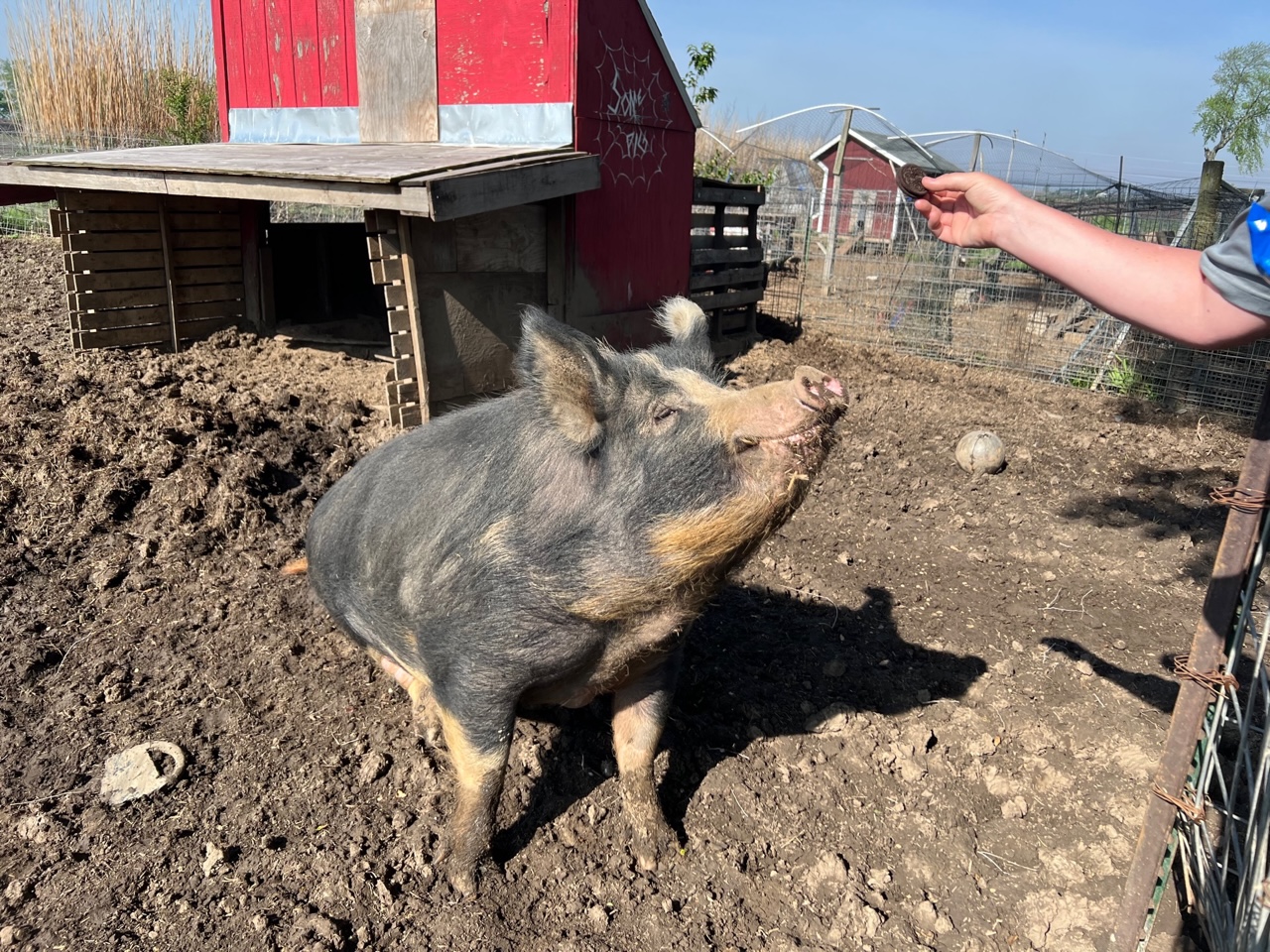
Photo by Alyssa Buckley.
Pigs are companion animals, so I didn’t realize when I took one, I had to take two.
That’s FreeBee, Jude’s brother, and FreeBee was the free runt that was thrown in and his forever friend.
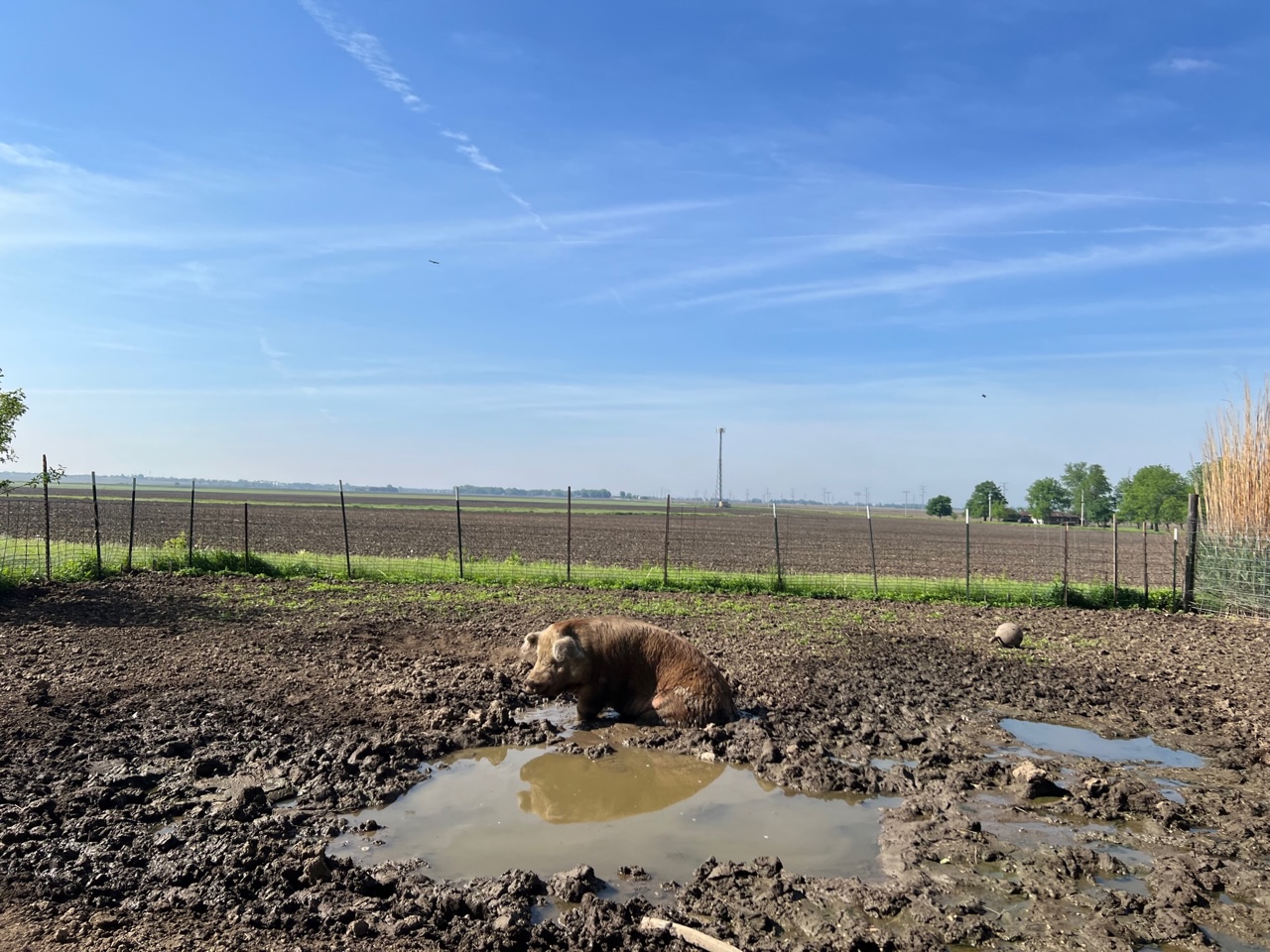
Photo by Alyssa Buckley.
They’re four years old now and about five hundred pounds.
SP: Do they just lay in the mud all day?
Swanson: So mud acts as a sunscreen for them, and it cools them off because pigs don’t have sweat glands. Let me see if I can get him over here.
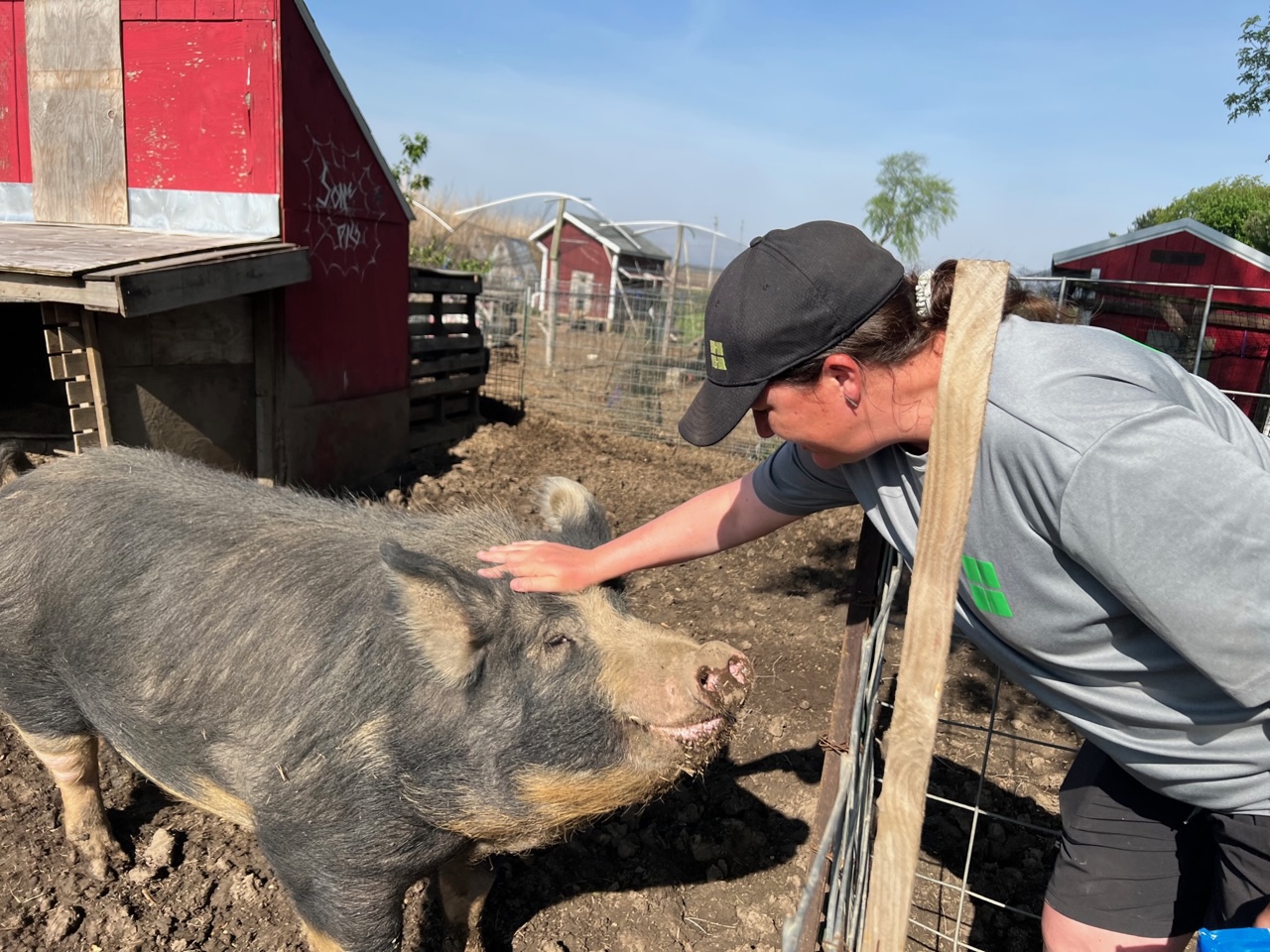
Photo by Alyssa Buckley.
Because pigs were raised in my house, they are kind of like dogs. They can sit for treats; it’s kind of fun.
SP: That’s awesome. So tell me about the crew here at Hendrick House Farm. How many people work here?
Swanson: There’s six of us. We have three new hires. We all come to work, and we work outside. It’s just a very happy, happy environment.

Photo by Alyssa Buckley.
SP: Okay, so let’s say you’re done working on the farm for the day, and you’re going out, where do you like to go?
Swanson: When I’m not farming, I am usually doing dinners. I also volunteer for the Mobile Market, a non-profit. I love working, especially volunteering for non-profits. It kind of fills my soul. It sounds a little pretentious, but it’s good for the soul.
If I’m going out to dinner, I really like Nando. I think the food is awesome. It’s my favorite restaurant. I’ve never had a bad meal there. The food is just amazing. I love it. Black Dog is really good, and I love Farren’s for burgers.
I feel like the pandemic really hindered our food scene in Champaign, and it’s so sad. I watched a lot of my friends’ restaurants close, and a lot of my friends lost their jobs. I feel like we’re in a build-back mode in our food scene. Well, you’re the Food + Drink Editor, what do you think?
SP: I think it was rough. I am starting to see the scene come back, but places are still short-staffed. People are ready for the pandemic to be done, but there’s a lot of people out at restaurants and only so many tables a server can serve at a time.
Swanson: I just feel like a lot of people lost their jobs and a bunch of restaurants had to close. I just think the whole industry is struggling so badly right now.
SP: So true, and it’s sad. Ann, when you aren’t farming or volunteering, what do you like to cook at home?
Swanson: I have some dehydrated ramps, and so I made ramp powder from them. I’ve been using that as a spice. I made a roasted chicken, and I sprinkled some ramp powder on it for seasoning. It is so good! My friend and one of the chefs at the dinner this year, Jeff Hake, who is part of Funk’s Grove — he’s really wonderful. They do a maple ramp seasoning using their maple syrup, and oh my god, it is to die for! I put it on everything: fish, chicken, everything.
When the season gets warmer, I want to eat a lot of produce from the farm. I find myself eating more sliced tomatoes with salt and pepper. I can eat a tomato like an apple.
SP: I think it’s so cool what you’re doing out here on the farm.
Swanson: It’s all about the new generation. If we can get this new generation of kids caring about the stuff they eat, maybe we can move away from the 1960-70s rush of food. My mom was working a full-time job and had four kids, so we ate a lot of the Midwestern casseroles. You know, the canned soup and canned veg? Yeah, with corn flakes sprinkled on top. She just didn’t have time to cook, and it wasn’t until I was working in restaurants until I was exposed to the importance of fresh food and how it correlates to overall health.
Hendrick House Farm
3004 North Rising Rd
Champaign








